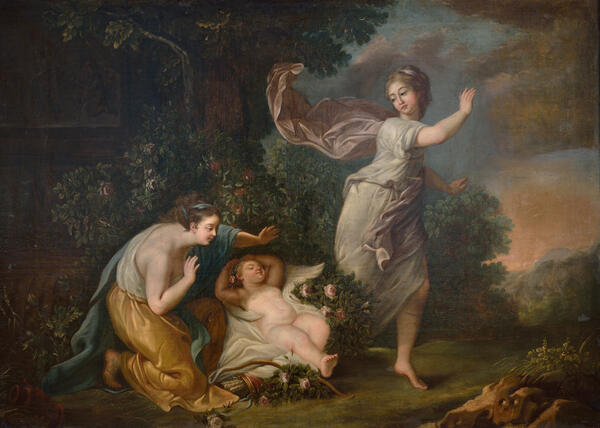The 18th century, which embodied the gallantry and carelessness of high society, was most vividly manifested in the Rococo style. The Rococo style originated in France and reached its peak in the era of Louis XV and his brilliant favorite Madame de Pompadour. Therefore it is often considered a French artistic trend and even received a special name — the style of Louis XV.
Sometimes Rococo is called the Pompadour style, as the king’s favorite was a true style icon of her time. In art, a course was taken towards decorativeness, sophistication, playful forms and even some affectation. This was due to the fact that social life was concentrated in elegant living rooms and salons. Mythological subjects were often depicted, sometimes piquant ones. Venus, nymphs and other images taken from mythology are abundantly represented in the paintings of this period.
The artist who created the charming composition “Cupid and the Nymphs” was undoubtedly inspired by the aesthetics of his time. The mythological plot against the background of a conventionally decorative landscape perfectly illustrates the tastes of the French aristocratic society at the court of Louis XV, where lightness, grace, carelessness and enjoyment of life reigned supreme. Eternally young nymphs, guarding the sleep of the playful son of Venus from the flaring day, delight the eye with feminine grace. The soft color transitions of their robes shimmering with olive, bluish-green, and lilac emphasize the plasticity of turning heads, flowing into the curves of hand gestures and the contours of body lines. The light compositional asymmetry of the depicted group, the emotionality of the heroines, and their poses create the impression of ballet improvisation against the background of a bizarre curtain of nature with architectural elements and lush thickets of bushes with fragrant roses.



